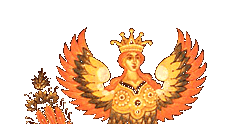Wearable lacquer art has been around since the beginning of its production. Due to people using lacquer products on a daily basis, for practical things, they also made it a point to bring attention to themselves by wearing a piece of lacquer art jewelry. Sometimes a few different forces work together in the making of lacquer art jewelry. Like a jeweler being called upon to make a frame into which a painted piece of paper-mache fits into a brooch. They can also aid in the making of necklaces, earrings, and sometimes even watches; however making a watch a piece of art is more often done by Russian enamel painters and specialists.
A piece of painted and polished paper-mache brings across the same appeal as jewelry with gemstones, gold, or silver. What sets lacquer art jewelry apart is that the attention grabber lies in that it was made by hand. The smallest of paintings, even the size of a fingerprint can radiate color and light like an opal, or more exactly, in an opalescent fashion. Once an admirer draws in for a closer look at what might be a bouquet, landscape, or a fairy tale scene they get a sense of wonder and amazement at how something so small could be painted on by hand.
This appeal in what seems like the impossible draws certain people to wear lacquer art jewelry. These collectors of fine art and jewelry know that this type of lacquer art cannot be worn on a daily basis. The lacquer art jewelry is so special in fact that one can wear them to special events like banquets, operas and ballets, or exclusive social gatherings. Lacquer art breathes distinction, and a piece of lacquer art jewelry can add the perfect amount of grace and glamour to any ensemble of designer clothing.
When lacquer art got its start in Palekh, Kholuy, and Mstera there was a period of experimentation that naturally occurred until artists in those villages found their niche. In Fedoskino lacquer art had already been around since the 1800's, and making these exclusive items was no new thing. Ivan Golikov, founder of modern lacquer art as we know it, painted on everything. Brooches and paper-mache jewelry was not an exception. In the Palekh Museum of Lacquer Art there is a special cabinet of lacquer art jewelry, by various artists past and present, showing impressive diversity in theme and range of artist talent.
Not only is wearable lacquer art made for the fashionable accessorizer, but also for the religious person in search of heavenly enlightenment. Icons or images of Russian Orthodox saints, angels, Jesus, and Mary are commonly depicted on brooches. They are worn on a lapel, or on a shirt over the heart. Usually a person who wears an icon has the saint painted on the brooch associated with his or her name. These are painted with very stringent rules that honor icon painting's rich past. Since icons are considered holy items these brooches cannot be called art or jewelry since the mysteries of God deserve more than a label categorizing them into a genre or art movement.
In Fedoskino some artists have stepped away from using paper-mache, but in favor of another material commonly associated with Fedoskino lacquer art. Mother-of-pearl is this item and sometimes an artist will make a brooch, pendant, or hairclip out of that as opposed to paper-mache. The painting style stays the same, but the effect of an iridescent white background makes them sparkle even more with the fire of a gemstone. Examples of this can be found in N. Krestovskaya's "Lacquer Miniature: Fedoskino" on page 90. The four brooches featuring portraits of various Romanov's are painted by Nikolay Soloninkin (who painted the portrait of Mikhail Gorbachev that made the cover of Time Magazine when the former Soviet leader was man of the year in 1989) on mother-of-pearl set into silver frames.
Some artists have dedicated a great amount of time to making only lacquer art jewelry. They make entire sets of matching jewelry, which includes a bracelet, earrings, and a hairclip of some sort. Fedoskino artists add inlays of mother-of-pearl, while Palekh, Kholuy, or Mstera artists use gold and aluminum to feed the intensity of the decoration.
In the Russian lacquer art world, boxes have become the norm. People are used to them being the staple and definition of what lacquer art is. However, there is a place for the artist's imagination to go when they want to work or experiment on an even smaller scale. This is one place that lacquer art can indeed make its presence felt among the elite and among those who appreciate the true definition of fine art.
|



